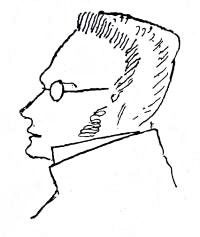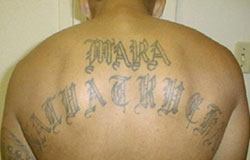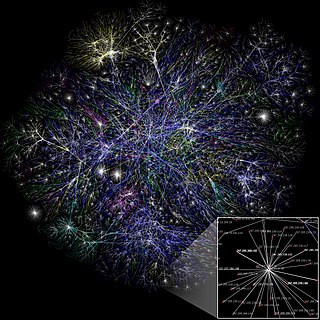Related Research Articles

Organized crime is a category of transnational, national, or local groupings of highly centralized enterprises run by criminals to engage in illegal activity, most commonly for profit. While organized crime is generally thought of as a form of illegal business, some criminal organizations, such as terrorist groups, rebel forces, and separatists, are politically motivated. Many criminal organizations rely on fear or terror to achieve their goals or aims as well as to maintain control within the organization and may adopt tactics commonly used by authoritarian regimes to maintain power. Some forms of organized crime simply exist to cater towards demand of illegal goods in a state or to facilitate trade of goods and services that may have been banned by a state. Sometimes, criminal organizations force people to do business with them, such as when a gang extorts money from shopkeepers for "protection". Street gangs may often be deemed organized crime groups or, under stricter definitions of organized crime, may become disciplined enough to be considered organized. A criminal organization can also be referred to as a gang, mafia, mob, (crime) ring, or syndicate; the network, subculture, and community of criminals involved in organized crime may be referred to as the underworld or gangland. Sociologists sometimes specifically distinguish a "mafia" as a type of organized crime group that specializes in the supply of extra-legal protection and quasi-law enforcement. Academic studies of the original "Mafia", the Italian Mafia, which predates the other groups, generated an economic study of organized crime groups and exerted great influence on studies of the Russian mafia, the Chinese Triads, the Hong Kong Triads, and the Japanese Yakuza.
A gang is a group or society of associates, friends or members of a family with a defined leadership and internal organization that identifies with or claims control over territory in a community and engages, either individually or collectively, in illegal, and possibly violent, behavior.

A chain gang or road gang is a group of prisoners chained together to perform menial or physically challenging work as a form of punishment. Such punishment might include repairing buildings, building roads, or clearing land. The system was notably used in the convict era of Australia and in the Southern United States. By 1955 it had largely been phased out in the U.S., with Georgia among the last states to abandon the practice. North Carolina continued to use chain gangs into the 1970s. Chain gangs were reintroduced by a few states during the "get tough on crime" 1990s: in 1995 Alabama was the first state to revive them. The experiment ended after about one year in all states except Arizona, where in Maricopa County inmates can still volunteer for a chain gang to earn credit toward a high school diploma or avoid disciplinary lockdowns for rule infractions.
A gang bang is a sexual activity in which one person is the central focus of the sexual activity of several people, usually more than three, sequentially or simultaneously. The term generally refers to a woman being the focus; one man with multiple women can be referred to as a "reverse gang bang". The term has become associated with the porn industry and usually describes a staged event whereby a woman has sex with several men in direct succession. Bukkake is a type of gang bang originating in Japan that focuses on the central person being ejaculated upon by male participants.
Articles related to criminology and law enforcement.

Orlando Tive "Baby Lane" Anderson was an American gangster who is the prime suspect in the murder of Tupac Shakur. Anderson belonged to the California-based gang known as the Southside Compton Crips. Detective Tim Brennan of the Compton Police Department filed an affidavit naming Anderson as a suspect; he denied involvement and was never charged. Anderson was killed in an unrelated gang shootout at the age of 23.
A prison gang is an inmate organization that operates within a prison system. It has a corporate entity and exists into perpetuity. Its membership is restrictive, mutually exclusive, and often requires a lifetime commitment. Prison officials and others in law enforcement use the euphemism "security threat group". The purpose of this name is to remove any recognition or publicity that the term "gang" would connote when referring to people who have an interest in undermining the system.

In criminology, subcultural theory emerged from the work of the Chicago School on gangs and developed through the symbolic interactionism school into a set of theories arguing that certain groups or subcultures in society have values and attitudes that are conducive to crime and violence. The primary focus is on juvenile delinquency because theorists believe that if this pattern of offending can be understood and controlled, it will break the transition from teenage offender into habitual criminal. Some of the theories are functionalist, assuming that criminal activity is motivated by economic needs, while others posit a social class rationale for deviance.

Jeung San Do (증산도), occasionally called Jeungsanism, meaning "The Dao/Tao of Jeung-san", although this term is better reserved for a larger family of movements, is a new religious movement founded in South Korea in 1974. It is one of more than 100 Korean religious movements that recognize Gang Il-sun (강일순), an early 20th century religious leader, as the incarnation and personification of Sangjenim and performed a "reordering of the universe" through his mission and rituals. The religion is characterised by a universal message, millenarianism, and a method of healing meditation.

Illegalism is a tendency of anarchism that developed primarily in France, Italy, Belgium and Switzerland during the late 1890s and early 1900s as an outgrowth of individualist anarchism. Illegalists embrace criminality either openly or secretly as a lifestyle. Illegalism does not specify the type of crime, though it is associated with theft and shoplifting.

In criminology, social control theory proposes that exploiting the process of socialization and social learning builds self-control and reduces the inclination to indulge in behavior recognized as antisocial. It derived from functionalist theories of crime and was developed by Ivan Nye (1958), who proposed that there were three types of control:

In sociology and criminology, strain theory states that social structures within society may pressure citizens to commit crime. Following on the work of Émile Durkheim, strain theories have been advanced by Robert King Merton (1938), Albert K. Cohen (1955), Richard Cloward, Lloyd Ohlin (1960), Neil Smelser (1963), Robert Agnew (1992), Steven Messner, Richard Rosenfeld (1994) and Jie Zhang (2012).

In sociology, the social disorganization theory is a theory developed by the Chicago School, related to ecological theories. The theory directly links crime rates to neighbourhood ecological characteristics; a core principle of social disorganization theory that states location matters. In other words, a person's residential location is a substantial factor shaping the likelihood that that person will become involved in illegal activities. The theory suggests that, among determinants of a person's later illegal activity, residential location is as significant as or more significant than the person's individual characteristics. For example, the theory suggests that youths from disadvantaged neighborhoods participate in a subculture which approves of delinquency, and that these youths thus acquire criminality in this social and cultural setting.

Homeboy Industries is a youth program founded in 1992 by Father Greg Boyle following the work of the Christian base communities at Dolores Mission Church in Boyle Heights, Los Angeles. The program is intended to assist high-risk youth, former gang members and the recently incarcerated with a variety of free programs, such as mental health counseling, legal services, tattoo removal, curriculum and education classes, work-readiness training, and employment services. A distinctive aspect of Homeboy Industries is its structure of a multifaceted social enterprise and social business. This helps young people who were former gang members and former inmates to have an opportunity to acquire job skills and seek employment in a safe, supportive environment. Among the businesses are the Homeboy Bakery, Homegirl Café & Catering, Homeboy/Girl Merchandise, Homeboy Farmers Markets, The Homeboy Diner at City Hall, Homeboy Silkscreen & Embroidery, Homeboy Grocery, and Homeboy Cafe & Bakery in the American Airlines terminal at Los Angeles International Airport.
Techniques of neutralization are a theoretical series of methods by which those who commit illegitimate acts temporarily neutralize certain values within themselves which would normally prohibit them from carrying out such acts, such as morality, obligation to abide by the law, and so on. In simpler terms, it is a psychological method for people to turn off "inner protests" when they do, or are about to do something they themselves perceive as wrong.
Hold That Line is a 1952 comedy film starring the Bowery Boys. The film was released on March 23, 1952 by Monogram Pictures and is the 25th film in the series.

As of 2011, there are an estimated 25,000 gang members at large in El Salvador; another 43,500 are in prison. The best-known gangs, called maras in colloquial Salvadoran Spanish, are Mara Salvatrucha (MS-13) and their rivals 18th Street; maras are hunted by death squads, including Sombra Negra. Newer rivals include the rising mara, The Rebels 13. Criminal youth gangs dominate life in El Salvador; an estimation of at least 60,000 young people belong to gangs. It is one of the three countries of the Northern Triangle of Central America, along with neighboring Guatemala and Honduras, which are all afflicted with high levels of violence.

Criminology is the interdisciplinary study of crime and deviant behaviour. Criminology is a multidisciplinary field in both the behavioural and social sciences, which draws primarily upon the research of sociologists, political scientists, economists, psychologists, philosophers, psychiatrists, social workers, biologists, social anthropologists, as well as scholars of law.

A social network is a social structure made up of a set of social actors, sets of dyadic ties, and other social interactions between actors. The social network perspective provides a set of methods for analyzing the structure of whole social entities as well as a variety of theories explaining the patterns observed in these structures. The study of these structures uses social network analysis to identify local and global patterns, locate influential entities, and examine network dynamics.
A Crime concentration is a spatial area to which high levels of crime incidents are attributed. A crime concentration can be the result of homogeneous or heterogeneous crime incidents. Hotspots are the result of various crimes occurring in relative proximity to each other within predefined human geopolitical or social boundaries. Crime concentrations are smaller units or set of crime targets within a hotspot. A single or a conjunction of crime concentrations within a study area can make up a crime hotspot.
References
- ↑ Gangs and gang activity in a non-metropolitan community: The perceptions of students, teachers, and police officers, Social Behavior and Personality, 2001 by Swetnam, Josh; Pope, Jacqueline